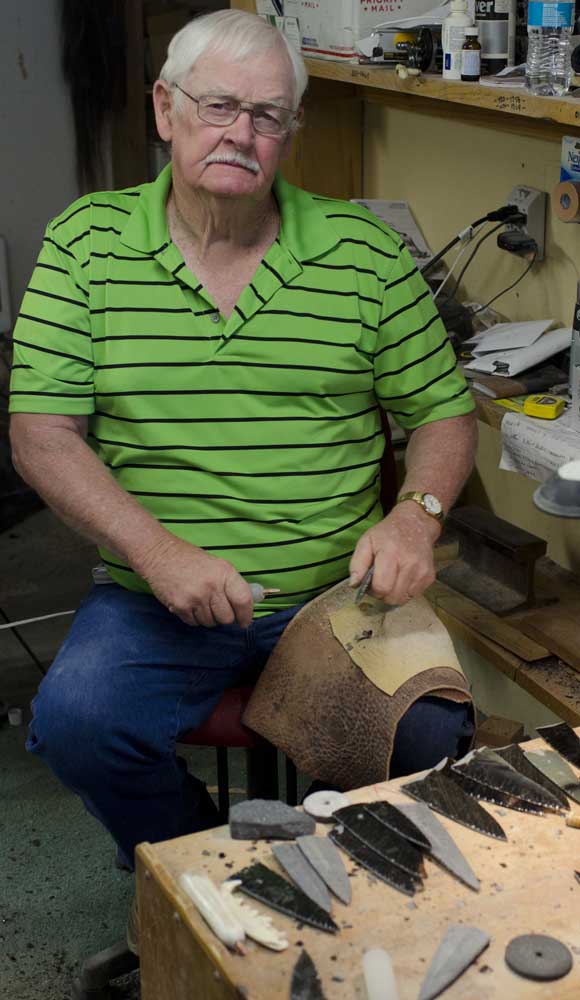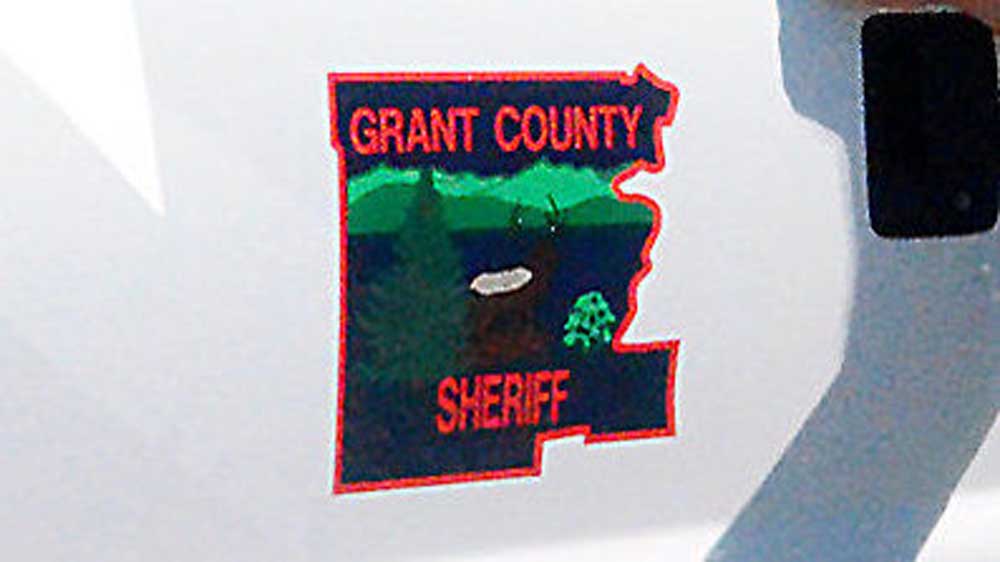Carving a niche
Published 2:30 pm Tuesday, September 13, 2016

- Dale Duby sculpts the blade of an obsidian knife using a technique called flintknapping on Thursday, Sept. 8.
While Dale Duby’s obsidian knives aren’t cutting-edge technology, he always keeps a box of bandages close at hand.
Great Basin Art started out with Dale making obsidian arrowheads in his spare time and grew into what he says is the largest obsidian knife making business in the world.
“Nobody is set up to do what we do,” Dale said. “That’s not what we set out to do. It’s just that nobody else produces like we do.”
Dale, his wife, Claudia, and their four employees make Stone Age-style knives with horn and bone handles in Prairie City. Each starts as a chunk of obsidian that is cut into sheets with a lapidary slab saw. From there, the profile of the blade is formed using a glass cutter. Dale shapes the blade using a bench grinder and then sculpts the blades using a technique called flintknapping.
Dale sells most of his blades in trading posts and tourist spots, especially Alaskan gift shops frequented by cruise line passengers.
He has also recently started selling to Sportsman’s Warehouse. In the past, he’s made custom orders for foreign dignitaries and Leatherman founder Timothy Leatherman. Through his work, he was invited to join The Royal Privileged Shooting Society — which, founded in 1447 in Bavaria, is the oldest hunting club in Europe.
Originally a logger, Dale sold his arrowheads made in the offseason to help support himself. After heeding the advice of a customer, Dale added a handle to 30 of his blades and sold 22 of them in one day at a flea market in Portland.
From there, it was nothing but growth. He began traveling and showing his wares to gift shops and trading posts and soon began receiving mass orders for his products.
Dale soon stopped traveling due to the number of orders coming in. After filling his first order of 100 knives, his technique improved immensely. He partnered with a marketing firm and set out in earnest.
What began as a mom and pop business has blossomed into a business that is expected to sell over 5,000 knives in this year alone, according to Dale’s wife.
Though the style of knives Dale makes have long been obsolete, he says they strike a chord in people.
“It brings out the caveman in you,” Claudia said.
Many of the materials Dale uses are local. The obsidian he buys by the ton comes from Glass Butte and other areas around Burns. He tries to buy antlers locally, but there is often not enough available to fill the demand. It’s often a challenge to find items such as badger, fox and elk jaw bones and buffalo ribs, essential to making the knife handles.
“If you don’t have the handles, you’re dead in the water when people order knives,” Dale said.
The jawbone knives are especially popular with kids, Claudia added.
“They seem to love the teeth,” she said.
Dale has been approached about selling his business, but without it, he said he and his wife wouldn’t know what to do with themselves. At 75, Dale says the only reason he would sell his business would be a major health problem.
Most of Great Basin Art’s sales are outside the county, which brings money into the local economy — something the Dubys say gives them a sense of satisfaction.
Dale hired local artist Lynn Thornton to do the scrimshaw engraving on the handles of the knives. Thornton creates the design by etching into the handle with a power tool called a Presto High Speed Handpiece and then dabs ink into the groove and wipes away the excess, leaving only the inked design.
Each knife comes with a wooden stand made in house by Gary Rapp, an experienced wood worker who also makes furniture for Great Basin Art, which is sold out of their store, Prairie Trading Post, in Prairie City.
Dale is trying to minimize the furniture aspect of his business as the knives are more profitable. In the past he has made primitive-style lances and tomahawks with obsidian heads but discontinued them for the same reasons as the furniture.
As the demand for Dale’s knives continue to grow, so does their business and the niche they’ve carved for it.





